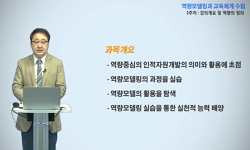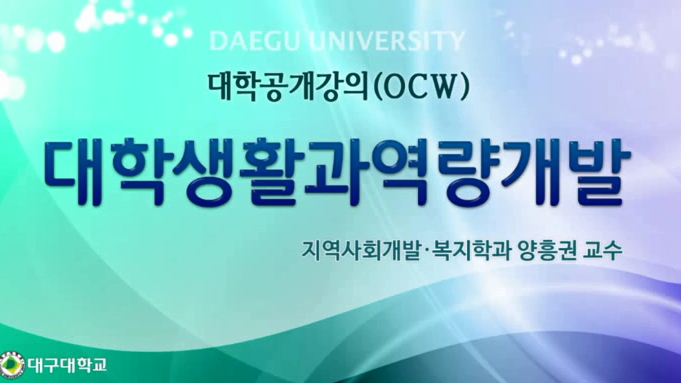주민주도형의 마을공동체를 형성하고 지속시키기 위한 제도적 노력인 마을만들기는 지방분권이 확대됨에 따라 지역사회의 발전 역량을 축적하는 학습 과정으로서 더욱 중요해졌다. 최근 ...
http://chineseinput.net/에서 pinyin(병음)방식으로 중국어를 변환할 수 있습니다.
변환된 중국어를 복사하여 사용하시면 됩니다.
- 中文 을 입력하시려면 zhongwen을 입력하시고 space를누르시면됩니다.
- 北京 을 입력하시려면 beijing을 입력하시고 space를 누르시면 됩니다.
신내생적 농촌 마을만들기를 위한 마을구성원간 역할 분석 연구 : 경기 가평군 3개 마을공동체 사례를 중심으로 = A Study on the Role Analysis among members of rural villages for Neo-Endogenous Rural Community Development
한글로보기https://www.riss.kr/link?id=T15892065
- 저자
-
발행사항
서울 : 서울시립대학교 도시과학대학원, 2021
-
학위논문사항
학위논문(석사) -- 서울시립대학교 도시과학대학원 , 도시계획학과 , 2021. 8
-
발행연도
2021
-
작성언어
한국어
- 주제어
-
발행국(도시)
서울
-
형태사항
ⅳ, 69 p. ; 26 cm
-
일반주기명
지도교수: 이승일
-
UCI식별코드
I804:11035-000000033003
- 소장기관
-
0
상세조회 -
0
다운로드
부가정보
국문 초록 (Abstract)
주민주도형의 마을공동체를 형성하고 지속시키기 위한 제도적 노력인 마을만들기는 지방분권이 확대됨에 따라 지역사회의 발전 역량을 축적하는 학습 과정으로서 더욱 중요해졌다. 최근 농림축산식품부의 농촌 마을만들기 사업이 지역밀착형 사업으로서 지방 이양됨에 따라 여러 우려가 발생하는 가운데 마을공동체 우수사례를 통한 마을구성원간 역할과 역량에 대한 분석이 필요하다고 사료된다. 이 연구는 농촌지역 발전의 성공사례는 대부분 비경제적 측면에서의 발전을 통해서 이루어지고 있으며, 내부 주체들의 주도적인 역량에 의해서 이루어진다는 신내생적 발전의 관점에서 마을공동체의 지속성에 영향을 미치는 요인들을 도출하였다. 그 요인의 범주를 인적요인, 물적요인, 네트워크, 환경요인으로 설정하고 비경제적 측면의 공동체 특성인 대성1리의 심층 분석을 통해 세부요소를 도출하였다. 그 결과를 토대로 경제적 측면의 공동체 특성인 행현1, 2리에 설문조사를 실시한 결과, 중요도 최고값인 5점 기준, 각 요소들의 평균값이 4.37점으로 공동체 특성의 차이에도 불구하고 공통적으로 마을공동체에 영향을 미치는 중요한 요소임이 검증되었다. 인적요인에서는 리더의 중요도값이 경제적 공동체 특성임에도 불구하고 소득시설보다 중요도값이 높았다. 결국 경제적 특성인 공동체도 인적요인이 가장 큰 영향을 미치는 것으로 나타나 본 연구의 목적은 마을구성원간 역할을 심층적으로 분석하는데 의의가 있다. 설문조사 결과를 바탕으로 마을구성원에 대한 심층면담을 진행하여 리더와 주민의 역할과 역량에 대해 분석하였다. 리더의 역할은 정보탐색 및 공유, 동기부여, 비전수립, 인적자원양성, 사업 계획 및 확보 등이며 이를 위한 역량으로는 적극성, 봉사심, 참여의식, 공동체의식, 목표의식, 배려심 등이 요구되었다.
더불어 마을 역량에 관한 추가 설문을 실시한 결과와 심층면담 결과를 토대로 농촌 마을만들기 정책에 대한 시사점을 제시하였다.
첫째, 외부지원을 통해 사업을 착수하는 경우, 착수 이전에 최소한 공동체는 형성되어 있어야 한다.
둘째, 역량을 형성하고 강화하기 위해서는 형식적인 교육이 아닌 각 마을의 비전을 달성하기 위한 교육이어야 한다.
셋째, 결국 신내생적 농촌 마을만들기를 위한 가장 중요한 요인은 리더인데 젊은 리더를 유도하고 육성하기 위해서는 경제활동의 기회가 보장되는 정책적 지원이 필요하다.
다국어 초록 (Multilingual Abstract)
As decentralization expanded, rural community, an institutional effort to form and sustain a resident-led village community, has became more important as a learning process that accumulates the development capacity of the local community. Recently, as...
As decentralization expanded, rural community, an institutional effort to form and sustain a resident-led village community, has became more important as a learning process that accumulates the development capacity of the local community. Recently, as the rural community development project of the Ministry of Agriculture, Food and Rural Affairs has been transferred to the provinces as a regionally-oriented project, various concerns have arisen. This study examines factors affecting the sustainability of village communities from the perspective of neo-endogenous development, that most successful cases of rural community are made through development in the non-economic aspect, and that it is achieved by the initiative of internal actors. It was derived and applied to the village unit. In addition, these factors were identified and verified through in-depth research analysis of one village case, which is a community characteristic in the non-economic aspect, and two village cases, a community characteristic in the economic side. The categories of factors affecting the sustainability of the village community are set as human factors, material factors, networks, and environmental factors. A survey was conducted in Haenghyeon 1-ri, 2-ri, and the average result value of each factor was 4.37 points out of 5 points. In the human factor, the importance value of the leader was higher than that of the profit facility despite the economic community characteristic. In the end, the economic characteristic of the community also showed that the human factor has the greatest influence, so it is meaningful in analyzing the role of village members, the goal of this study. Based on the results of the survey, in-depth interviews were conducted with village members to analyze the roles and capabilities of leaders and residents. The role of the leader is searching and sharing information, motivating, establishing vision, nuturing human resources, planning and attracting business.
In addition, an additional questionnaire on village capacity was conducted to suggest implications for rural community development policies along with the results of in-depth interviews.
First, when starting a project through external support, at least a community must be formed before the start.
Second, in order to capacity building, it should be education to achieve the vision of each village, not formal education.
Third, the most important factor for a neo-endogenous rural community development is a leader, and in order to induce and nurture young leaders, policy support that guarantees economic opportunities is needed.
목차 (Table of Contents)
- 제1장 서 론 1
- 제1절 연구의 배경 및 목적 1
- 제2절 연구의 내용 4
- 제3절 연구의 범위 및 방법 6
- 1. 연구의 범위 6
- 제1장 서 론 1
- 제1절 연구의 배경 및 목적 1
- 제2절 연구의 내용 4
- 제3절 연구의 범위 및 방법 6
- 1. 연구의 범위 6
- 2. 연구의 방법 6
- 제2장 이론적 고찰 9
- 제1절 신내생적 발전 9
- 1. 신내생적 발전론을 활용한 연구 10
- 2. 농촌 마을단위에서의 적용 11
- 제2절 농촌 마을만들기 12
- 1. 정부지원 마을만들기 12
- 2. 가평군 아람마을만들기 22
- 제3절 선행연구 검토 24
- 제3장 분석 개요 26
- 제1절 조사분석 방법론 26
- 제2절 분석 항목 29
- 1. 현지조사 내용 29
- 2. 심층면담 내용 29
- 3. 설문조사 내용 30
- 제4장 가평군 농촌 마을공동체 사례의 조사 분석 32
- 제1절 문화·복지공동체 대성1리의 심층조사 분석 32
- 1. 현지조사 결과 32
- 2. 심층면담 결과 39
- 제2절 소득·체험공동체 행현1, 2리의 조사 분석 46
- 1. 현지조사 결과 46
- 2. 설문조사 결과 48
- 3. 심층면담 결과 51
- 제3절 소결 57
- 제5장 결론 59
- 제1절 연구의 요약 및 시사점 59
- 제2절 한계점 61
- ■ 참고문헌 62
- ■ 부록 64
- ■ 영문초록 67












